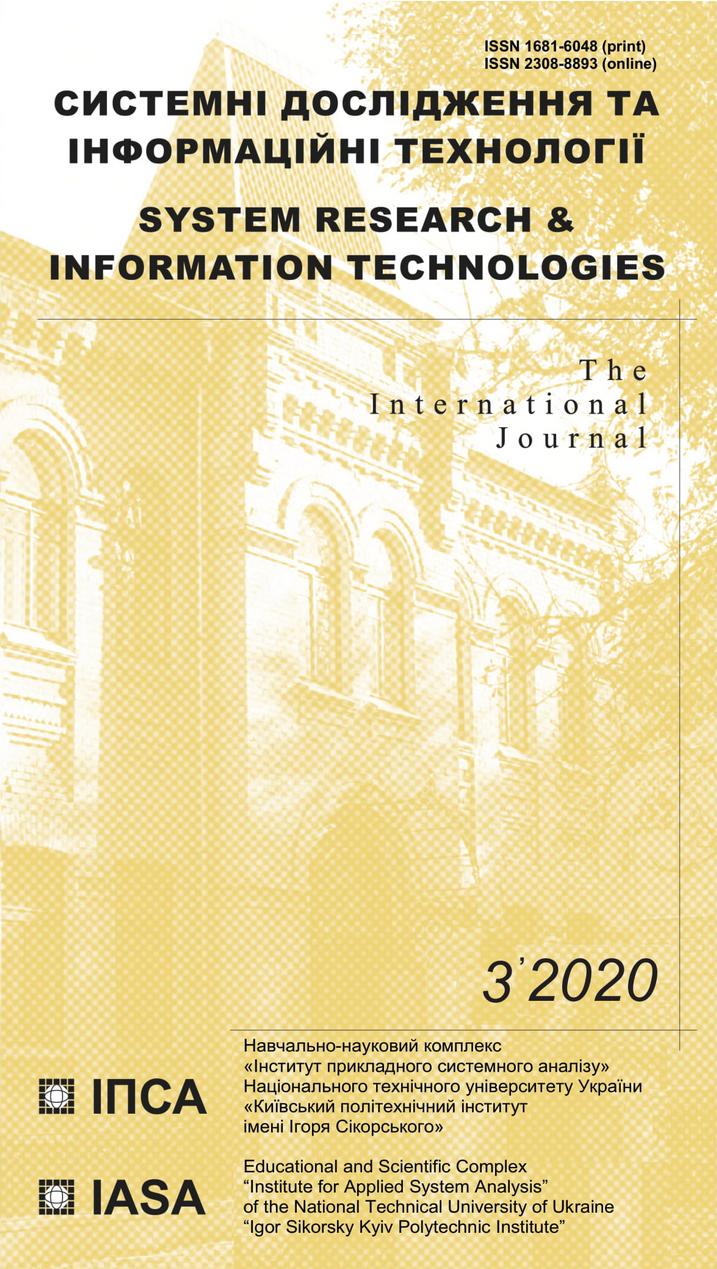Investigation of the class of algebraical functions for interpolation of boundary trajectories of short-focus electron beams
DOI:
https://doi.org/10.20535/SRIT.2308-8893.2020.3.02Keywords:
electron beam, electron beam guiding, focal region, interpolation, class of algebraic functionsAbstract
The method for interpolating the dependence of the electron beam radius on the cutting plane position by the longitudinal coordinate, based on using the special class of interpolation functions, was investigated in this article. The roots of n-th order from the polynomials of the same order are used as the class of interpolation functions, which correspond to the ravine dependence of the radius of a short-focus electron beam on the distance of propagation. The results of testing have shown that, depending on choosing the set of basic points, including its position relatively to the minimum and their quantity, the relative interpolation error is between 0,7% and 8%. Obtained results of mathematical simulation of focal parameters of electron beams have the significant practical importance for the specialists, involved in the development and introduction into industrial production of modern highly effective electron-beam technological equipment.References
N.N. Rykalin, I.V. Zuev, and A.A. Uglov, Fundamentals of Electron-Beam Materials Treatment. Moscow: Mashinostroenie, 1978.
S. Shiller, U. Geisig, and S. Panzer, Electron-beam technology. Moscow: Energy,1980.
Electron Beam Welding, edited by B.E. Pathon. Kyiv: Naukova Dumka, 1987.
M.A. Zavialov, Yu.E. Kreindel, A.A. Novikov, and L.P. Shanturin, Plasma Processes in the Technological Electron Guns. Moscow: Atomizdat, 1989.
Y.E. Krasik et al.,“High-current electron sources based on gaseous discharges”, Vacuum, vol. 77, no. 4, pp. 391–398, 2003.
V.A. Gruzdev, V.G. Zalesski, D.A. Antonovich, and V.P. Golubev,“Universal plasma electron source”, Vacuum, vol. 77, no. 4, pp. 399–406, 2003.
S. Denbnovetskiy et al., “Principles of operation of high voltage glow discharge electron guns and particularities of its technological application”, Proceedings of SPIE The International Society of Optical Engineering, pp. 10445–10455, 2017.
J.D. Lawson, The Physics of Charged-Particle Beams. Oxford: Clarendon Press, 1977.
I.V. Melnyk and A.V. Pochynok, “Interpolation of Boundary Trajectory of Electron Beam in the Near-Focus Region by the Linear and Square Functions with Using of Arithmetic-Logical Equations”, Bulletin of Kherson National Technical University, issue 2 (69), part 2, pp. 23–30.
I. Melnik, S.Tugay, and A. Pochynok, “Interpolation Functions for Describing theBoundary Trajectories of Electron Beams Propagated in Ionised Gas”, 15th International Conference on Advanced Trends in Radioelectronics, Telecommunications and Computer Engineering (TCSET–2020) Conference Proceedings.[Online]. Available: https://www. researchgate.net/publication/341248002_Interpolation_Functions_for_ Describing_the_ Boundary_Trajectories_of_Electron_Beams_Propagated_in_Ionised_Gas
I. Melnyk, S. Tuhai, and A. Pochynok, “Interpolation of the Boundary Trajectories of Electron Beams by the Roots from Polynomic Functions of Corresponded Order”, 2020 IEEE 40th International Conference on Electronics and Nanotechnology (ELNANO). Conference Proceedings, pp. 28–33.
S.V. Denbnovetskiy, V.I. Melnik, I.V. Melnik, and B.A. Tugai, “Sumulation of Guiding Short-Focus Electron Beams from the Low to High Vacuum with Taking into Account the Dissipation of Electrons Velocity”, Applied Physics, no. 3, pp. 84–90, 2010.
M. Szilagyi, Electron and Ion Optics. Springer Science & Business Media, 2012.
S.I. Molokovskiy and D.I. Sushkov, Intensive Electron and Ion Beams. Moscow: Energoatomizdat, 1991.
A.A. Samarskiy and A.V. Gulin, Numerical Methods: Tutorial Book for Higher Education Institutions. Moscow: Nauka, 1989.
F.P. Vasiliev, Numerical Methods for Solving the Extremal Problems: Tutorial Book for Higher Education Institutions. Moscow: Nauka, 1988.

